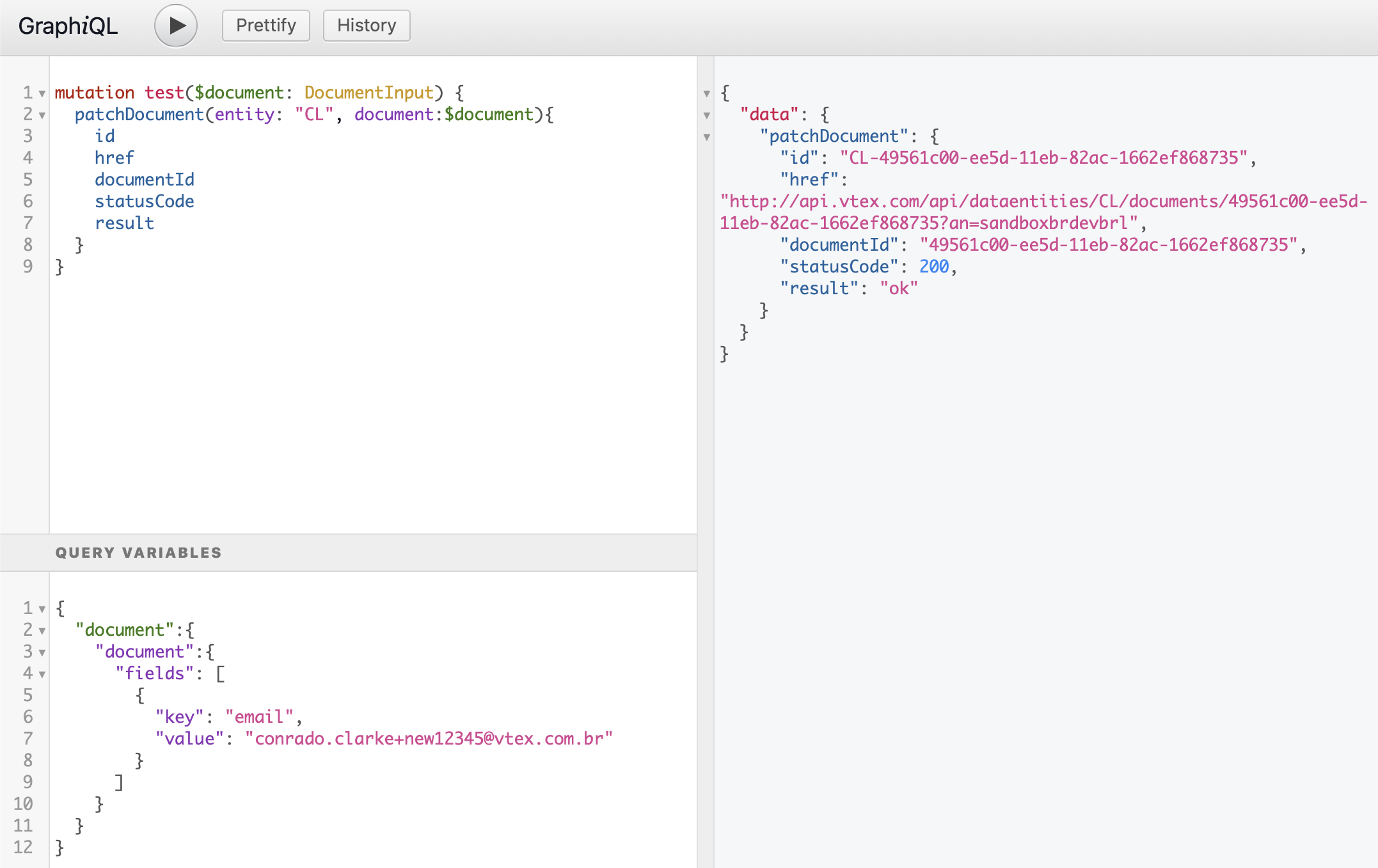After March 01 of 2023, this application will no longer be maintained by the RPT BR team. Maintenance will be the responsibility of the ecosystem, everyone will be able to make a branch with the changes or improvements they want to make, make a pull request and we will approve it.
📢 Use this project, contribute to it or open issues to help evolve it using Store Discussion.
Querying personal MasterData Information with SafeData
The SafeData app provides an easy to use, configurable middleware to retrieve and save MasterData (V1 & V2) information directly on the front-end, or through another back-end.
It works by acting as an validation layer on top of MasterData API to ensure the data being queried belongs to the user executing the action.
Getting Started
You can install it through the app store or the command-line interface:
_10vtex install vtex.safedata@0.x
The base configurations for CL (Client) and AD (Address) entities are automatically configured but can be changed by using the app settings interface which is currently in progress.
Upon installing, some public routes will become instantly available to use.
Syntax
SafeData respects the same MasterData routes which can be accessed by replacing api/dataentities for safedata:
For example, you need to query the address AD entity by the addressName (addressName=12345):
Path
To implement SafeData in a store, you need to insert the path api/io to your endpoint before safedata, for example:
GET https://myaccount.myvtex.com/api/io/safedata/AD/search?_where=addressName=12345
Supported Routes
As of this writing, SafeData supports the following routes:
-
Get document:
GET /safedata/{entity}/documents/{documentId} -
Search documents:
GET /safedata/{entity}/search -
Create document:
POST /safedata/{entity}/documents -
Create or update document:
PATCH /safedata/{entity}/documents -
Entire document update:
PUT /safedata/{entity}/documents/{documentId} -
Delete document:
DELETE /safedata/{entity}/documents/{documentId} -
Partial document update:
PATCH /safedata/{entity}/documents/{documentId}
All underscore query parameters are supported (_where, _fields, _schema and so on).
GraphQL interface
SafeData also provides a patchDocument mutation in GraphQL which enables react components (IO) to create/update documents in MasterData.
The schema is as follows:

fields is a Key/Value pair for each MD field.
This is still a work-in-progress, so for now only the PATCH functionality is available.
Working with custom checkout fields
When a client is making their first purchase, the CL entity may be created preemptively if the store has specific customizations to include new fields in the checkout process, i.e., birth date. This could cause problems since SafeData forbids customers to change personal data when they are not logged in. To avoid this problem, you can add the query parameter _orderFormId so SafeData can ensure the customer can safely change their information since it's their first checkout. See the following example:
PATCH /safedata/CL/documents?_orderFormId=7217c9c7413142dd93e3b715f95cd03d with this payload:
_10{_10 "email": "my_email@domain.com",_10 "birthDate": "1990-10-11T00:00:00"_10}
When this request is called for the first time the user does not exist, so it is allowed to be created anonymously.
In subsequent calls, SafeData checks the _orderFormId to ensure the user was created in this checkout session, so they can update their information without asking for credentials.
This allows users to update their personal information during the checkout process without logging in, ONLY during the first purchase.
Once a purchase is finished, a complete profile is generated, and in order to update this information again the user has to log in (as expected by design)
Please be aware that currently ONLY the PATCH /documents route supports the _orderFormId parameter, and that it only works with entities that contain an email field in their schema.
How does SafeData work?
The whole process is based on the CL entity, which is used as a guide to identify the user. First, we reach out to Vtex ID to confirm the StoreUserAuthToken is valid and get the user e-mail. Then we retrieve only the necessary fields on the CL entity to ensure the user is manipulating/obtaining only entities that belongs to them.
This is done through a field comparison between CL and whatever entity is being queried. For instance, when searching for documents of the AD entity, we compare their userId to the id found in the CL entity, and the action is only allowed if they match.
The comparison fields must be searchable. However, they do not have to be public, and we do not recommend making any fields public.
It is possible to allow other MasterData entities to follow these rules by registering them on the app settings:

Please be aware that the field options are currently unavailable, and users are allowed to update any fields.
Performance Impact
Querying and updating information through SafeData is by definition slower than doing so directly on MasterData, because of all the extra security checks. However, preliminary tests have shown that:
- The median execution time for create/update operations stays below 200ms
- Search operations depend heavily on the queries, but the median execution time stays between 50-100ms
- Get operations are very fast and usually take around 25ms
- Obtaining the current user credentials takes around 15ms per request
Roadmap
- White-listing updateable fields
- Scroll operation